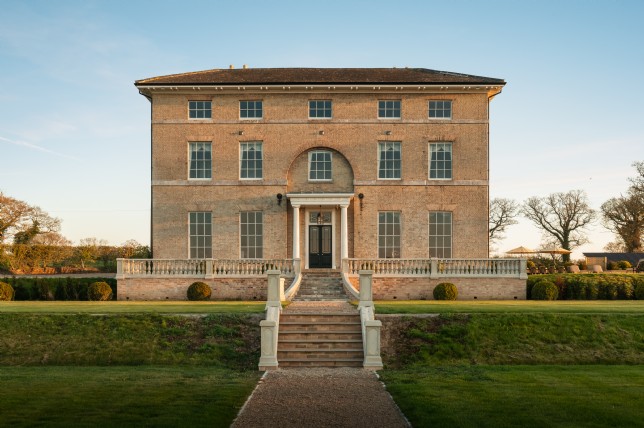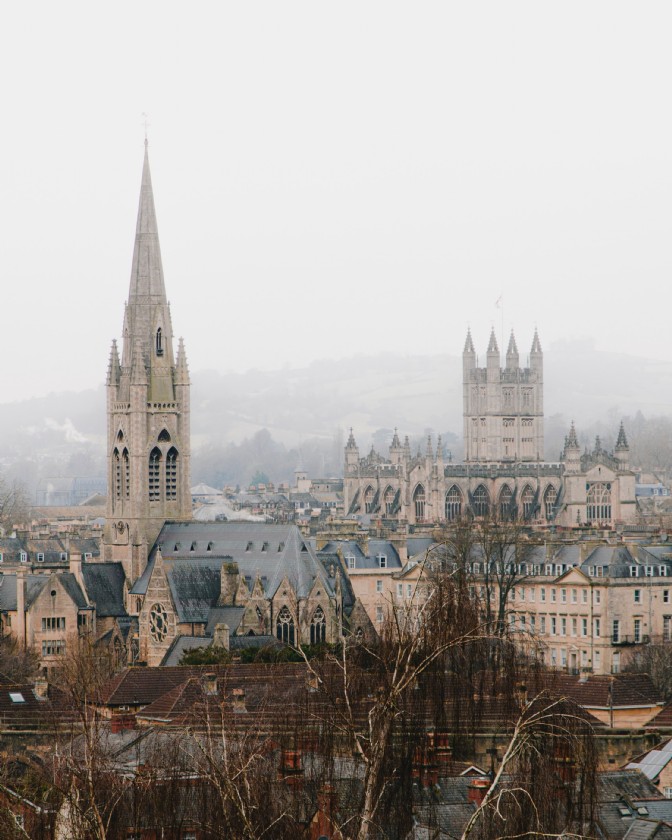If the capital has lost its allure, fear not, for we have just the remedy. We’ve curated a list of the best places to visit from London – from the Kent coast to the Cotswolds countryside – and covered everything to see and do when you get there. Then again, a whole lot of nothing might be the order of the day.
Whether your escape from the city means a chance to reconnect with your beau in a romantic hideaway pour deux, or you’ve gathered the recruits for R&R in the form of deckside yoga and morning sencha tea with the sand between your toes, one thing’s for sure: here, time is on your side. So, fling open the French shutters, make a splash in the outdoor pool, or seek inspiration for a private chef supper paired with Bacchus from neighbouring vines. These are the best places to visit from London in just a couple of hours. As for returning… well, we can’t promise you'll find it quite so easy.
For creatures and cobbles: East Sussex
Stretching across parts of East Sussex and West Sussex, the South Downs National Park offers family-friendly footpaths and wildlife-spotting opportunities in spades. Take little explorers by the hand as you peep roe deer at play in ancient Ghyll woodlands, or soar to new heights in the Seven Sisters Country Park, where dramatic Channel-views from the chalk cliffs are paired with skylarks, kestrels, and peregrine falcons swooping overhead. It’s no wonder that Virginia Woolf once wrote: "The Downs… too much for one pair of eyes, enough to float a whole population in happiness, if only they would look.”
Don’t pack the binoculars away in a hurry. A short cycle or forty-minute walk from Rye’s cobbled streets, you’ll find Rye Harbour Nature Reserve. A haven for twitchers, the 465-hectare coastal reserve – comprising salt marshes, shingle beaches, reed beds, and grazing marshes – is home to 4,355 species of plants and animals, including 300 rare or endangered species. Another day might be spent at Dungeness; known for its eery, end-of-days beauty, this shingle stretch may look barren, but it cradles a third of all British plant species, from crambe maritima (or sea kale) to delicate viper’s-bugloss (a native wildflower in the borage family). Pop into the shipping container seafood café that appears like a mirage on the shingles; the menu depends on the morning catch, but if you have the chance, don’t miss the Mexican lime and chilli-laden fish flatbreads.
How to get there by train: Catch a train from London Victoria, London Bridge, or St Pancras International, depending on your destination in East Sussex. The train services run regularly, and the journey time can vary between one to two hours depending on your destination.
Browse our full collection of luxury self-catering properties in East Sussex.
Best for foodies: Kent
With 221 acres of fertile farmland, protected waters, and pioneering artisan producers, it’s no wonder that Kent is at the forefront of the burgeoning British food scene. From farm-to-table experiences to oyster festivals and Michelin-starred dining, you’ll find it all a short train journey from the Big Smoke.
The Garden of England is ripe for the picking when it comes to sourcing best-in-show seasonal fare, so beeline for the county’s orchards, produce markets, and pick-your-own farms for scarlet cherries, plums, and pears straight from the stem.
Kent has a long-standing legacy of craft beer and cider production, with a scattering of olde-world oast houses and indie taphouses. Prefer la vie en rosé? Kent's favourable climate and chalk soil make it a prime region for English vineyards, with Chapel Down, Gusbourne, and Balfour all laying claim to the county’s coveted terroir. And, as they say: “what grows together, goes together.” Pair a bottle of perfectly chilled English sparkling wine with freshly-shucked Whitstable oysters, and you’ll never look back.
How to get there by train: Catch a train from London Victoria, London Bridge, or St Pancras International, depending on your destination in Kent. Train services run frequently, and the journey time can range from thirty minutes to one hour.
Browse our full collection of luxury self-catering properties in Kent.
For city spires and species-spotting: Somerset
If there’s an antidote to London living, it’s a day spent strolling Pulteney Bridge, sipping tea, and dipping into the Thermae Spa’s open-air pool as steam shrouds the silhouetted Abbey. It’s not all about being in Bath’s beating heart, however: the surrounding areas of Frome, Bruton, and Wells have firmly secured Somerset’s spot on the foodie map, where the agenda might read a little like: morning saunter through the farmers market, source deli spoils for a picnic up Glastonbury Tor, and head home to refresh for evening reservation at Osip (a small but mighty Michelin-starred restaurant led by Merlin Labron-Johnson).
The Mendip Hills, Ebbor Gorge, and Brean Down Peninsula all make for wholesome country days, but when it comes to the great outdoors, the Quantock Hills (AONB) are the jewel in the county’s crown. Spanning over 6,000 acres, the landscape is a designated Biological Site of Special Scientific Interest (SSSI), meaning its home to a rich variety of flora, fauna, rare butterfly species, and diverse birdlife. Well-maintained footpaths range from family-friendly to challenging hikes and cover see-it-to-believe-it stretches of coast, heath, and combe. Holing up in the hills for a week has never been more holistic.
How to get there: You can take a train from London Paddington station to various towns in Somerset, such as Bath, Taunton, or Weston-super-Mare. The journey time will vary based on your specific destination, but typically ranges from around one-and-a-half to three hours.
Browse our full collection of luxury self-catering properties in Somerset.
Best for outdoor pursuits: Hampshire
When it comes to mapping trails and planning picnics, Hampshire’s New Forest and South West Coast Path are about as paradisial as it gets. Meander through wildflower meadows, wetlands, and heather-cloaked heaths (which you might share with a herd of wild ponies), carrying a pack stuffed with watercress sandwiches and artisan chocolates from the biggest farmers' market in Europe. Aspiring Attenboroughs in tow? Be sure to visit the New Forest Wildlife Park, where you can observe native and exotic animals up close, from otters to owls and wallabies to wild boar.
Hampshire offers an array of cycling routes for riders of all levels: the New Forest is crosshatched with well-marked cycling paths (including the popular loops of Rhinefield Ornamental Drive and the more challenging off-road trails of the Forest Cycle Network), while the Meon Valley offers a ten-mile stretch of flat, disused railway line, which is ideal for "lazy active" days or littles still on stabilisers.
How to get there: You can take a train from various London stations, including London Waterloo or London Victoria. The journey time will vary based on your specific destination in Hampshire, but it typically ranges from around one to two hours.
Browse our full collection of luxury self-catering properties in Hampshire.
Best for history buffs: Suffolk
Suffolk may be known as ‘Constable Country’ – due to its ties to the 18th-century landscape painter, John Constable, whose works captured the beauty of Dedham Vale in the Stour Valley – but there’s much more for history buffs to discover beyond the brushstrokes (though it’s a good place to start).
For soaring spires, don’t miss the endless cloisters, courts, and chambers of Bury St Edmunds’ Cathedral, Abbey, and Gardens. Afterwards, head deep into the heart of the Suffolk countryside to Lavenham, a medieval village famous for its well-preserved timber-framed buildings, relics of the English wool trade. Next up is a visit to Sutton Hoo – the burial ground of an Anglo-Saxon ship that became one of the most significant archaeological discoveries of the 20th century – or a guided tour at Woodbridge’s 800-year-old Tide Mill.
We’d be remiss not to mention Suffolk’s heritage coastline. There’ll be cries of “oh, we do like to be beside the seaside” at Southwold – where arcade games and soft ‘99 flakes are the order of play – while Aldeburgh and Dunwich Heath proffer pastel-hued beach houses and equally vivid heather fields for photography opportunities aplenty. If Orford and Framlingham castles have you hankering for the royal treatment, there’s only one thing for it: your own palatial pad by The Broads for the weekend, where sun-dappled days are spent by a Lombardian pool and nights are spent sipping coupes of Champagne under empire chandeliers won from Sotheby's.
How to get there by train: Take a train from London Liverpool Street station to various towns in Suffolk, such as Ipswich, Bury St Edmunds, or Lowestoft. The journey time will vary based on your specific destination, but typically ranges from one to two hours.
Browse our full collection of luxury self-catering properties in Suffolk.
Best for quintessential countryside: The Cotswolds
There’s no shortage of things to see and do in the Cotswolds – so much so, that you may require a longer stay or multiple sojourns to really get to know this postcard-worthy pocket of England. Aside from its long-lusted limestone villages, culinary stars, and creative scene, there’s a rich historical heritage at its heart.
Oxfordshire’s UNESCO World Heritage Site, Blenheim Palace, is widely regarded as one of the finest examples of Baroque architecture (and known as the birthplace of Sir Winston Churchill), where opulent halls and landscaped gardens await. Whilst Sudeley Castle boasts royal connections spanning 1000 years, perhaps best-known for being the final burial site of Henry VII’s sixth wife, Katherine Parr, who is entombed in St. Mary’s Chapel.
Dating back to the 11th century, Gloucester Cathedral is famed for its stunning stained glass windows, intricate stonework, and grand fan-vaulted cloisters. Potterheads might recognise it as the Hogwarts School of Witchcraft and Wizardry, while Poldark and Lark Rise to Candleford fans can spy famous filming locations at Chavengage House, an Elizabethan house near Tetbury.
How to get there: Trains to Cheltenham Spa Station depart from London Paddington Station, the journey usually takes around two hours.
Browse our full collection of luxury self-catering properties in the Cotswolds.













